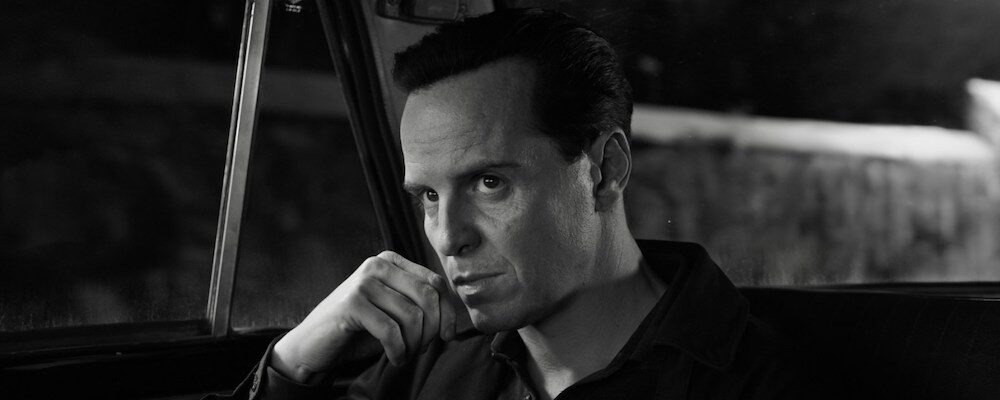Netflix’s ‘Ripley’ Reimagines Patricia Highsmith’s Classic Novel With Sinister Elegance
Alci Rengifo
Tom Ripley is an eternally alluring character, because whatever tone he takes there is something instantly relatable about him. It would be easy to switch identities, take on the role of another person and get their wealth. Patricia Highsmith’s 1955 novel, “The Talented Mr. Ripley,” endures because of its irresistible pull. Depending on the interpretation, you can root for Ripley, feel pity or dread him. Netflix’s “Ripley” is a fresh adaptation from renowned screenwriter Steven Zaillian that taps into the unsettling psychological angle of the story. Andrew Scott inhabits Ripley with a deceptively calm presence, infiltrating a privileged environment almost like a virus. He is dangerous precisely because he does not quite know how to maneuver in this world but will do anything to be in it.
Zaillian doesn’t seem to care about age and the cast is generational mix. Scott, 47, plays an older take on Ripley but the basics of the story remain the same. He’s a conman living in 1950s New York City, committing fraud posing as a debt collector. Then a private investigator approaches Tom at a bar. Somehow, shipping mogul Mr. Greenleaf believes Tom was once a friend of his son, Dickie Greenleaf (Johnny Flynn), in college. Dickie has stubbornly been spending his days painting and sunning himself in Italy. Mr. Greenleaf will offer Tom a salary, plus cover all his expenses, if he agrees to fly to Europe and convince Dickie to come back home. When Tom arrives in Naples, he finds Dickie living comfortably with girlfriend Marge (Dakota Fanning), an aspiring writer. They begin to form a friendship which soon becomes a case of Tom becoming a strange leech, plotting to then get more than just his salary.
“Ripley” has no desire to imitate past takes on this story. The best one remains Anthony Minghella’s 1999 “The Talented Mr. Ripley,” starring Matt Damon in the title role, Jude Law as Dickie and Gwyneth Paltrow as Marge. Other filmmakers have tackled the story, from René Clément’s 1960 “Purple Noon” to Emerald Fennell’s recent “Saltburn,” which isn’t an official adaptation but an attempted heir. Fans of the 1999 movie might find it hard at first to settle into this version which is slower and tries to reimagine the story as a triangle between characters nearing 40. In the Minghella film, Tom is a younger, hyper friendly type with a clear attraction to the spoiled, narcissistic Dickie. Zaillian shoots in sensuous black and white, photographed by the great Robert Elswit (“There Will Be Blood”) that evokes a bygone era but also flows with the purposefully low energy performances. Instead of wild youth, these are personalities lazing about. Minghella has Dickie pretending to be a jazz musician, Zaillian’s admits he’s not a good painter but doesn’t mind since he likes it.
What Zaillian keeps constant from the best versions is how this story is a thriller rooted firmly in class divisions. If the privileged in the ’99 movie act like they can say anything, here they’re written with the quiet manners of the properly raised. Dickie and Marge are nice to Tom almost in the extreme, never losing their temper even when he unintentionally brings a local thug to their villa. Dickie’s buddy, Freddie Miles (Eliot Sumner), is a quirky playwright this time around and not the glorious snob Philip Seymour Hoffman played for Minghella. Dakota Fanning’s Marge clearly harbors suspicions about Tom early on, but behaves like any proper girl of the upper crest, waiting to get mean until the time is right. The Andrew Scott casting has proven to be divisive, but if one puts aside the qualms about age, what he does so well is turn Tom Ripley into a tragic menace. He’s the underdog coveting life within the elite, yet he doesn’t know all the proper terms for fine items and little codes of conduct so natural to the rich. When Dickie catches him trying on one of his suits, it’s almost pathetic.
As anyone familiar with the story knows, this all leads eventually to murder when Dickie tells Tom the fun is over and it’s time to leave. Zaillian turns the killing, still on a boat out in the ocean, into an intense bit of dark comedy. Tom is no expert murderer and fumbles into a near-death encounter involving the boat and a concrete weight. From here the show picks up the pace and tension as we witness Tom slide into Dickie’s life, concocting his victim’s disappearance and evading Marge’s suspicions. How he builds a web of lies and forged evidence is wickedly thrilling. Conversations with Marge or Italian detectives turn into puzzles and standoffs. Highsmith’s creation is one of the great fictional portrayals of a savvy liar. It’s hard to update this story to the present because it depends so much on typing up a false letter with the right tone and sending people down to addresses they can’t confirm on Google Maps.
Steven Zaillian has been one of the most acclaimed screenwriters of the last few decades, penning classics like “Schindler’s List” and kicking off franchises such as “Mission: Impossible.” Yet, he’s only directed three films since 1993. What they feature is a love for detail, measured acting and precise compositions. “Ripley” as a thriller envelopes the viewer in the feel of a sea breeze or the sound of typewriter keys hitting the paper. It’s all in the details because that’s how Tom gets away with his scheme. He works hard at putting together own picture of what he wants others to believe is happening. It works with genuine menace, despite the temptation to empathize with his desires. A lot of crime works this way. The perpetrator isn’t always a maniacal villain with grandiose vision. Sometimes, all it takes is the frustration of having nothing and crossing the line to get more.
“Ripley” begins streaming April 5 on Netflix.

